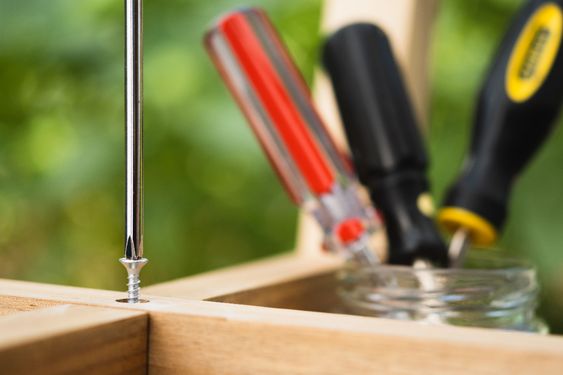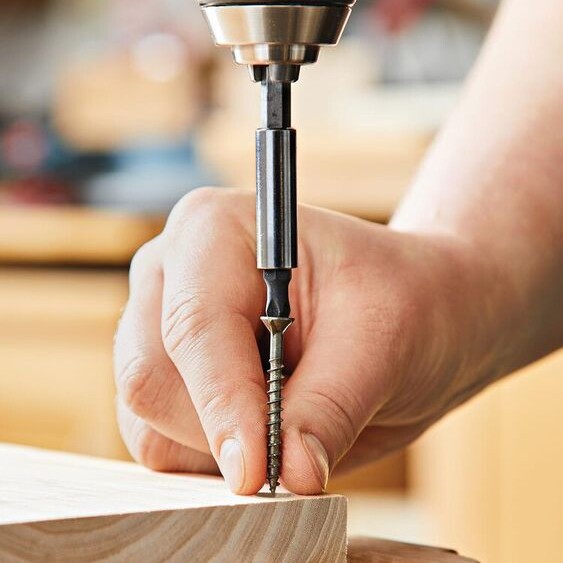
Carpentry is a craft that revolves around the precise joining of various materials, predominantly wood. Understanding fasteners is pivotal for any carpentry project as they are the integral components that hold everything together.
This article will navigate through the vital aspects of nails, screws, and other fasteners, their functions, types, and application methods to ensure your carpentry endeavors are structurally sound and aesthetically pleasing.
Key Takeaways:
- Fasteners are essential in carpentry for joining and securing materials.
- There are various types of fasteners, each suited for specific applications.
- Choosing the correct fastener depends on the material, joint type, and project requirements.
- Maintenance and proper installation of fasteners are crucial for project longevity.
- Knowledge of fastener types and usage is fundamental for any carpentry professional or enthusiast.
Table of Contents
Types of Fasteners in Carpentry
Nails

Nails are one of the oldest and most commonly used fasteners in carpentry. They are typically made of steel and come in various sizes and shapes, each designed for different applications and materials.
| Type | Description | Uses |
|---|---|---|
| Finish Nails | Thin with a small head | Interior trim, molding, and baseboards |
| Common Nails | Thick and strong with a large head | Framing, structural work |
| Box Nails | Similar to common nails but lighter | Lighter framing tasks, where splitting is a concern |
| Brad Nails | Small, thin with a fine head | Attaching small moldings and trim without visible nail heads |
| Roofing Nails | Short with a wide, flat head | Roofing shingles |
| Drywall Nails | Specialized to hold drywall panels | Hanging drywall |
Screws

Screws are another fundamental fastener, offering more holding power than nails, making them suitable for situations where strength and less risk of wood splitting are required.
| Type | Description | Uses |
|---|---|---|
| Wood Screws | Sharp point designed to grip wood fibers | Joining wood pieces |
| Sheet Metal Screws | Sharp threads to cut into metal | Fastening metal to wood or other metals |
| Drywall Screws | Bugle head to prevent tearing through drywall | Hanging drywall panels |
| Decking Screws | Weather-resistant coating | Outdoor decking, resistant to corrosion by elements |
Specialty Fasteners

Specialty fasteners include items like bolts, anchors, and various connectors and are designed to tackle specific challenges in carpentry and joinery.
| Type | Description | Uses |
|---|---|---|
| Carriage Bolts | Dome-shaped head with a square underside | Fastening wood to wood or metal with a smooth finish |
| Lag Bolts | Heavy-duty screws for robust construction | Heavy carpentry work, securing beams |
| Wall Anchors | Expanding sleeves for securing screws in drywall | Hanging heavy items on walls without a stud |
| Joist Hangers | Metal brackets to secure beams or floor joists | Structurally supporting floors and ceilings |
Selecting the Right Fastener

The selection of the right fastener is a meticulous process that hinges on the understanding of several elements including, but not limited to, the type of wood, the intended purpose, and the environmental conditions where the fastener will be used.
To learn more about different kinds of wood and their properties, consult our in-depth guide explaining wood types. Familiarize yourself with common carpentry terms to better understand fastener specifications and their applications.
Considerations When Choosing Fasteners:
- Material Compatibility: The material of the fastener should be suitable for the wood type to prevent chemical reactions or corrosion.
- Environmental Factors: For outdoor use, choose fasteners with a corrosion-resistant finish.
- Length and Thickness: Opt for a length that minimizes the risk of splitting while providing enough depth to secure the joints.
- Head Style: The head style should complement the project aesthetics and functionality.
- Drive Type: Choose a drive type (Phillips, flathead, Torx, etc.) based on the tool you are using and the accessibility of the fastening point.
Installation Techniques
The techniques used to install fasteners are as crucial as the fastener’s selection. Missteps in installation can lead to structural failure or unsightly finishes.
Grasp the essentials with our guide on basic carpentry techniques, where you will discover how to properly use nails and screws along with other fundamental carpentry skills.
Using Nails

For nailing, ensure you select the appropriate hammer or nail gun. Proper measurement and marking, which you can learn about on our page dedicated to measuring and marking, will ensure precise placement.
Avoid splitting by pre-drilling a pilot hole, especially when working at the end of a board or with hardwoods.
Using Screws

Subsequently, when using screws, operation of a power drill or screwdriver is necessary to drive them in place. Select the correct bit for the screw head, and pre-drill a hole slightly smaller than the width of the screw to avoid splitting.
Explore various power tools for beginners to effectively handle screwing tasks.
Anchors and Bolts

The installation of bolts and anchors demands a clear understanding of the material you are fastening into. Heavy-duty tasks may require a powered drill to create pilot holes, and utilizing wall anchors usually requires a hammer for initial placement and a screwdriver for tightening.
Maintenance and Care
Fasteners, although miniscule, require maintenance for longevity. Corrosion, loosening, and wear over time are factors that can compromise the integrity of carpentry work.
Our article on tool maintenance and care offers advice not only on tool upkeep but also on keeping fasteners in top condition.
Maintain a regular check-up routine, especially for outdoor structures susceptible to weather changes. Should a fastener fail or show signs of wear, replace it immediately to avoid further damage or potential injury.

